Rome, Georgia, is full of interesting history, and I love discovering new information about our town. While visiting Myrtle Hill Cemetary, you can find an area known as Veteran’s Plaza. Veteran’s Plaza is the resting place of the “Tomb Of The Known Soldier.” Standing guard at the tomb is a bronze “doughboy” statue and three machine guns. Around the tomb are over 3,000 inscribed bricks honoring and in memory of veterans.
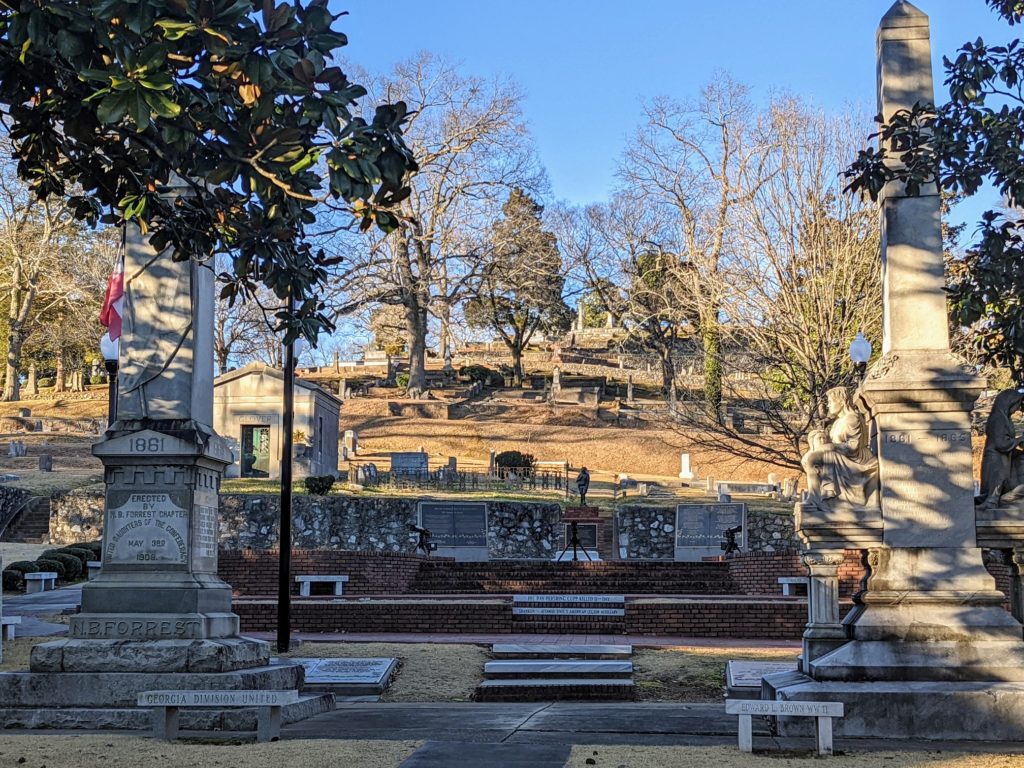
You have probably heard of the “Tomb Of The Unknown Soldier” in Arlington National Cemetary. It is an important historical monument dedicated to those U.S. service members whose remains remain unidentified. Rome, Georgia is home to the equally significant monument, the “Tomb Of The Known Soldier.” The commemoration is a powerful memorial to those known soldiers who lost their lives in World War I. The tomb belongs to Private Charles Graves of Rome, who died during World War I.
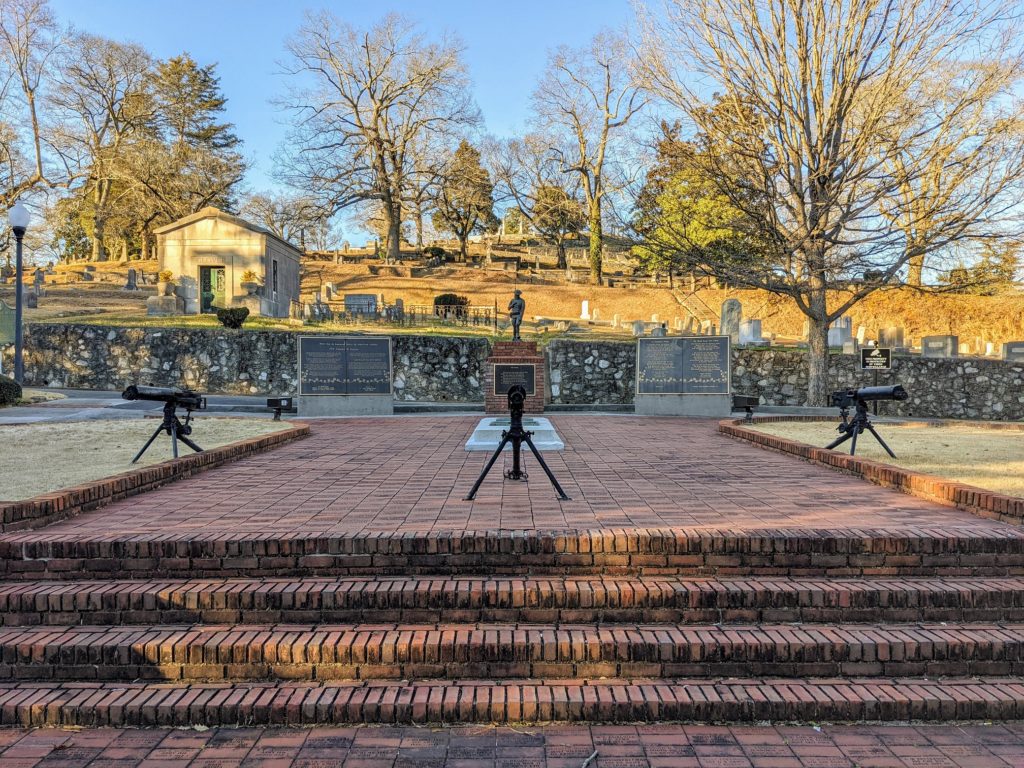
So how did Private Charles Graves receive such an honor?
When he enlisted in the military during World War I, Private Charles Graves was an 18-year-old resident of Rome, Georgia. He went to France, where he died in 1918 from German artillery. In France, he was buried with honors. Four years later, his body was exhumed from the ground and transported to New York, where several soldiers were honored by a ceremony and memorial parade. Private Charles Graves’ name was chosen randomly by a blindfolded Navy sailor to hold an honorary position in the ceremony. After the ceremony in New York, he was transported by train to Rome, Georgia, at his mother’s request, where he had honorable military service and was buried at Antioch Cemetery on Callier Spring Road.
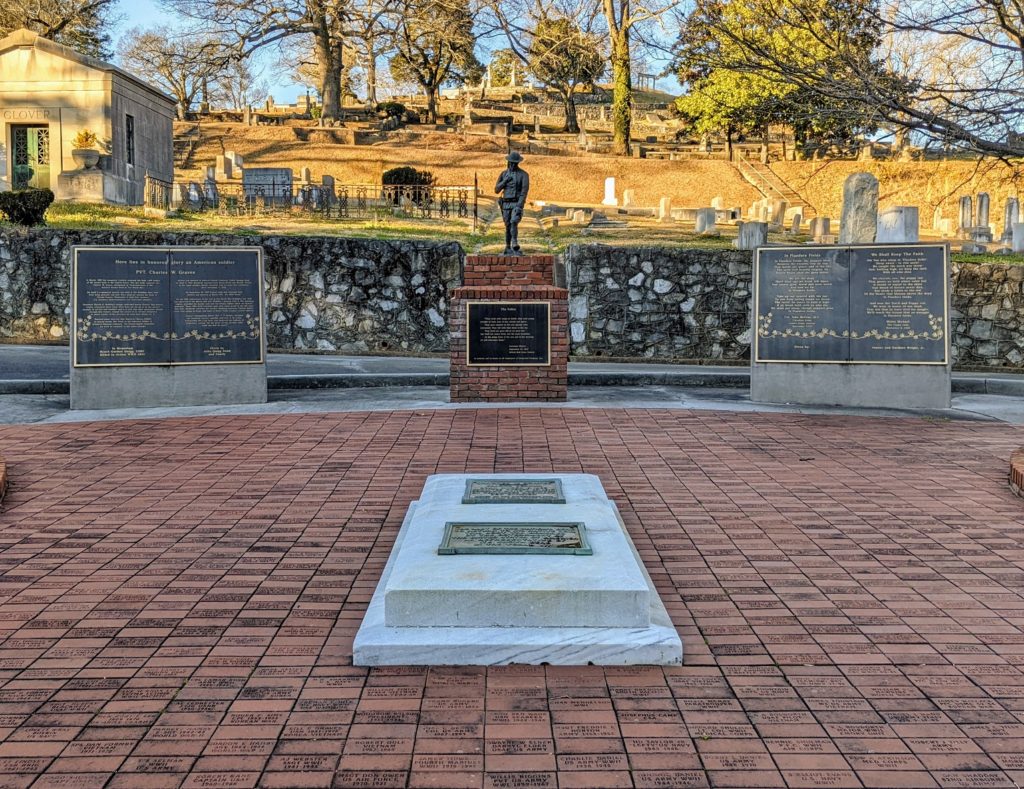
The citizens of Rome wanted a more notable burial place for him and requested a burial at Myrtle Hill Cemetery. There was a divided opinion on whether his body should be moved and buried a third time. On September 22, 1923, his body was transferred to its final resting place at Myrtle Hill during the night.
Two plaques are placed on top of the tomb.
The first one reads:
Charles W. Graves Private Soldier Born March 8, 1892, Enlisted August 16, 1917, Company M-117 Infantry 3rd Tennessee Regiment 30th Division Killed on The Hindenburg Line October 5, 1819, near Nuroy, France.
A second plaque reads:
THE LAST OF THE NATION’S DEAD TO RETURN TO HIS NATIVE SOIL, THIS BOY WAS HONORED BY THE GOVERNMENT OF THE UNITED STATES OF AMERICA AS REPRESENTATIVE OF ITS KNOWN DEAD IN THE WORLD WAR
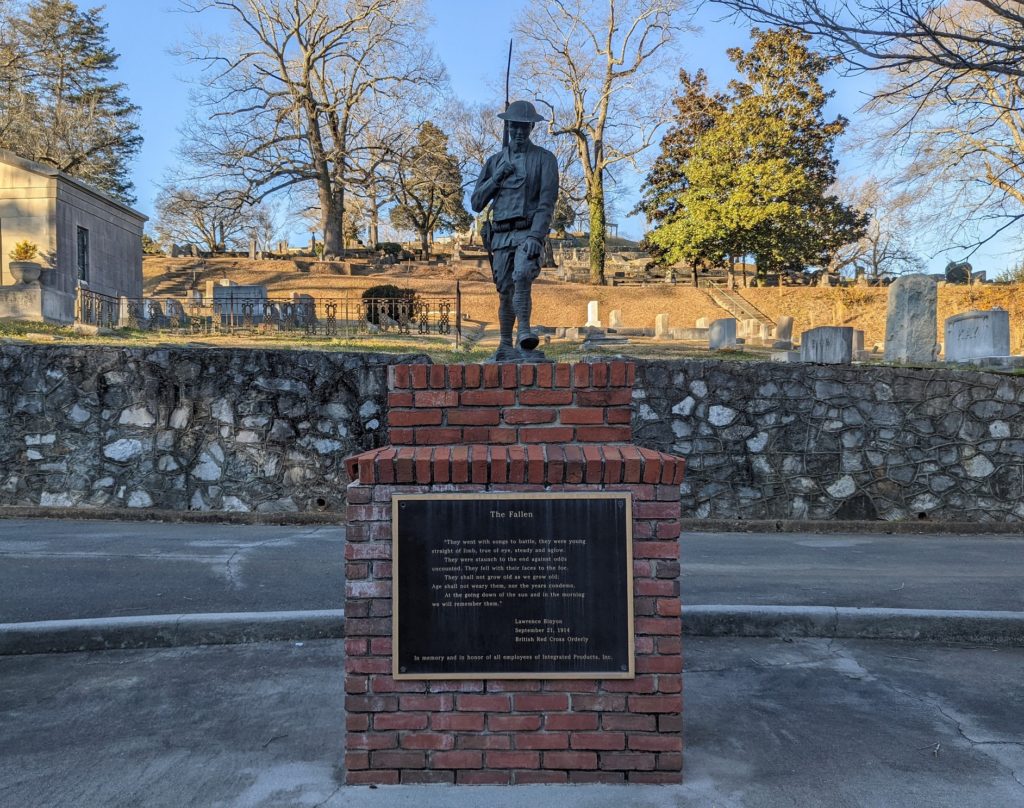
The Doughboy statue stands to watch over the grave. “Doughboy” was the nickname given to American Soldiers by the French and British military. While no one is certain how the name came about, they believe the color of the uniform resembles the color of dough that prompted the nickname.
The tomb resides on what is known today as Veteran’s Plaza. Veteran’s Plaza was dedicated on Veteran’s Day in 2000, and a memorial service is held there every year on Veteran’s Day. The Women Of The Confederacy statue is at the entrance of Veteran’s Plaza. The statue was dedicated in 1910 by President Theodore Roosevelt to the women who served as nurses in hospitals for Union and Confederate soldiers.
I think it is a beautiful tribute to all of the “Known Soldiers” that have died in battle. Have you visited the “Tomb Of The Known Soldier”?
For more information, visit Georgia’s Rome.
For more historical landmarks around Rome Georiga, check out the Historical Tour Of Broad Street.
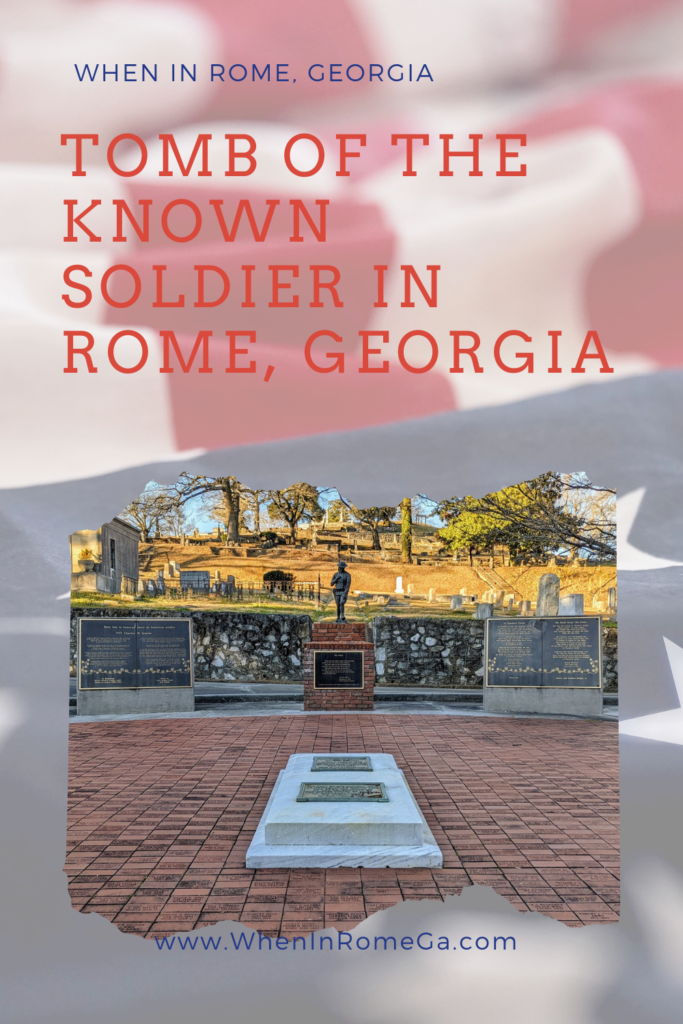





HI Erin – I was born in Rome in 1941 and attended “grammar” (elementary) school there & was a member of the Elm Street “Safety Patrol” squad along with David Patterson & Fred Astin. You are much too young to have ever run into those guys, and David passed away in Rome justa couple of years ago.
There is a book you may find interesting which covers an awful lot of Rome history and daily life entitled “ROBERT’S SCRIBBLINGS.” Much about Robert Rakestraw’s growing up in Shannon/Rome and meeting his wife, Roberta (Bobbie), and the forming of their Dance Academy which many Rome’s current elders attended.
The book is actually a collection of articles and columns written by Mr. Rakestraw and published in the Rome News Tribune over the last 40 years.
You may find several articles worthy of republishing in your postings. I believe Mr. Roberts is
still alive, living in Rome last I heard and in his mid-nineties. His eyesight and hearing are poor, but still enjoys conversation. Let me know if you learn otherwise.
Blessings – Jerold Gray (was Jerold “Smith” for the 12 years I lived in Rome)
Thank you so much for sharing. I will see if I can find this book. There is so much fascinating history right here in Rome, Georgia